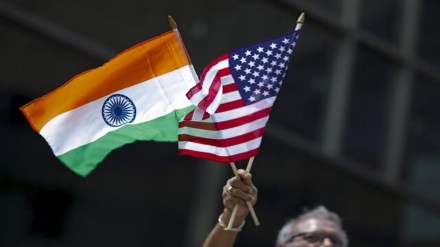The new “gold card” visa programme promises a potential pathway to US citizenship on payment of $5 million. However, there may be few takers for this wealth-based immigration model because of the uncertainty over taxation norms, writes Banasree Purkayastha.
What is the gold card visa programme?
US President Donald Trump on Wednesday unveiled plans for a $5-million “gold card” visa, which would offer foreign investors a pathway to American citizenship. A premium alternative to the green card, it requires them to pay $5 million (around Rs 43.5 crore) to the US government and go through vetting to ensure that they are “world-class global citizens”. While the details of this visa programme will be out in two weeks, Trump clarified that gold card holders would not have to pay taxes on income earned outside the US but would pay full taxes on domestic earnings. “You’re getting big taxpayers and big job creators,” said Trump, adding it would help reduce the US debt. “If we sell 10 million, that would be $50 trillion. We have $35 trillion in debt.”
Trump also indicated that the gold card may include provisions allowing companies to sponsor applicants with exceptional talent. He pointed to recent graduates from elite universities such as Wharton or Stanford as an example, suggesting companies such as Apple might sponsor gold cards for top talent they may want to employ.
How does it compare with the EB-5 visa?
The US administration has said the gold card would replace the existing EB-5 visa. The EB-5 immigrant investor programme, administered by the US Citizenship and Immigration Services, was created by Congress in 1990 to “stimulate the US economy through job creation and capital investment by foreign investor.” It requires an investment of $1.05 million, or $800,000 in economically distressed areas. It offers a faster route to a green card, typically within 3-5 years. Trump’s previous administration had tried to raise the threshold to $900,000 in 2019, but a federal court struck it down in 2021. The US issues 10,000 EB-5 visas annually, with each country allocated a maximum of 7%. The major difference between the two is that the EB-5 visa required one to invest the money, while the new gold card is an outright purchase.
Impact on Indian immigrants
While Indian immigrants in the US on H-1B, EB-2, or EB-3 visas can apply for the gold card visa and move closer to US citizenship, the $5-million tag puts it out of the reach of most, though it eliminates job sponsorship or business investment obligations. Work visas, particularly the H-1B visa, see the highest demand from Indians. The apprehension, however, is that gold card visa holders could push other visa holders down the green card queue. The waiting time for the green card or permanent legal residency – a pathway to eventual citizenship – is huge for Indians, at times running into decades. For highly skilled professionals, the O-1 visa is a better alternative as it offers the advantage to transition into an EB-1 green card, which does not have the huge backlogs faced by Indian applicants in other employment-based green card categories. Business owners and executives might consider the L-1 visa. Those who were looking at the EB-5 visa will need to hurry before it is scrapped as Trump has threatened, though some immigration experts say that would require a Congress mandate.
Similar visa-for-money elsewhere
More than 100 countries around the world offer “golden visas” to wealthy individuals. Several countries in Europe and elsewhere offer citizenship by investment programmes. Per the Henley Citizenship Program Index, Malta’s Granting of Citizenship for Exceptional Services by Direct Investment Regulations is the best, offering citizenship to those who contribute to its economic development. It requires an investment of at least €600,000 and 36 months of residency in Malta or €750,000 after residing there for 12 months. Others in the Henley top 10 list include Austria, Grenada, Antigua and Barbuda, Nauru and St. Kitts. Many of these such as St Kitts are attractive tax havens for international entrepreneurs looking to optimise their financial strategies. In Hanley’s Global Residence Program Index, Greece tops the list, followed by Switzerland which combines private residence with Swiss forfait tax provisions. The United Arab Emirates, a favourite destination for ultra-rich Indians, offers its golden visa residence programme for a minimum investment of $545,000.
Will there be enough takers for it?
Trump has said sales of 10 million gold cards could wipe off the US debt, but the question is whether there are enough ultra-rich individuals outside the US who can afford the $5-million visa. A Credit Suisse Global Wealth Report put the number of HNIs worldwide in the $5-10 million wealth range at 5.1 million and those in the $10 million-plus bracket at 2.8 million in 2022. So finding 10 million buyers won’t be easy. Trump may be hoping that the ultra-rich from Russia, China or South East Asia will come to the US with their money bags but not all would want to deal with the IRS. Immigration experts are doubtful whether this will be taken up by foreign billionaires as it could mean double taxation for a lot of rich people, though the gold card could attract migrant entrepreneurs who are running US focused businesses.
